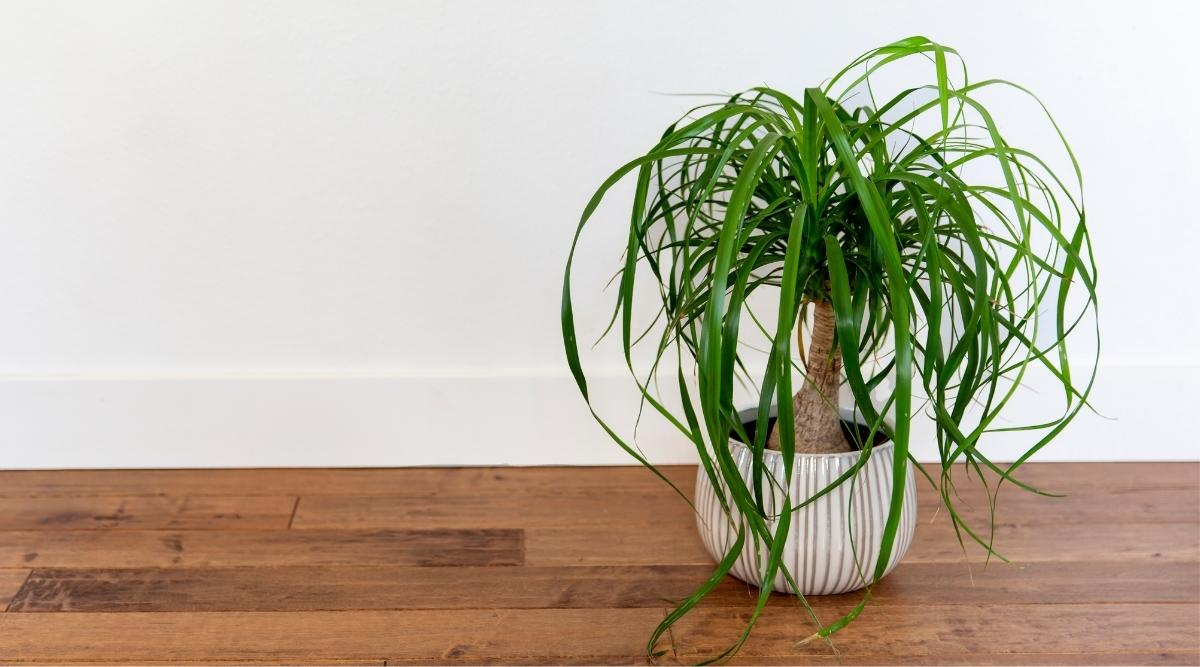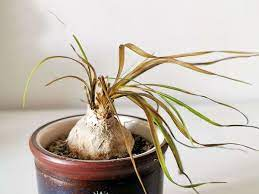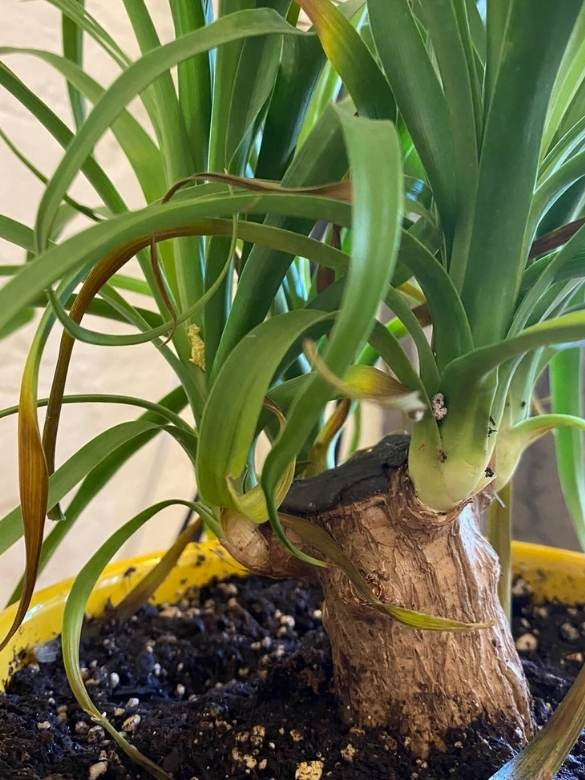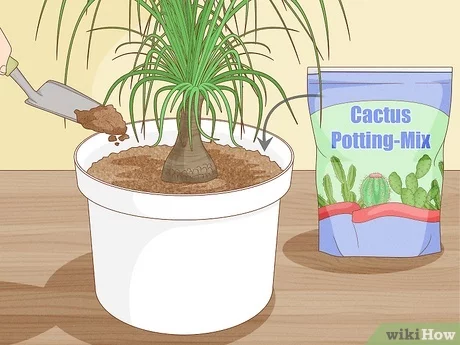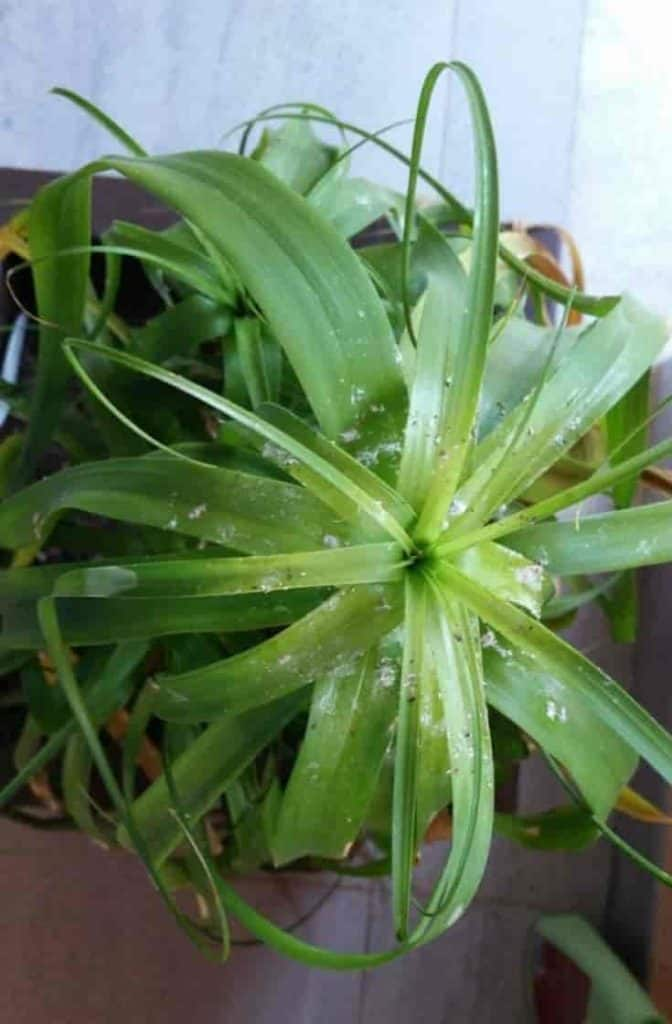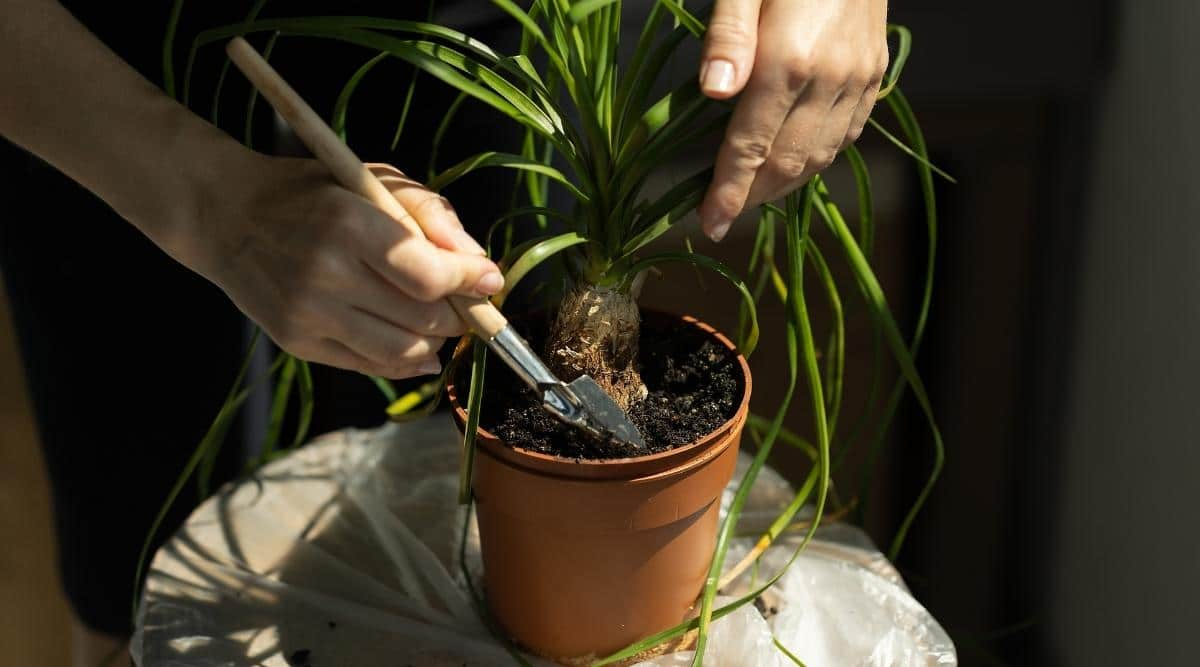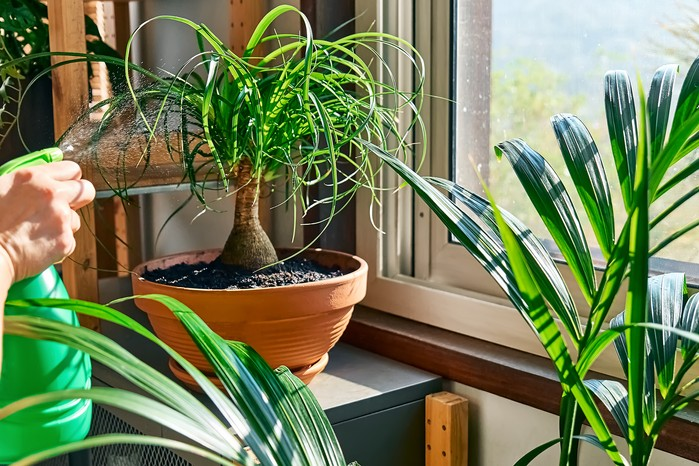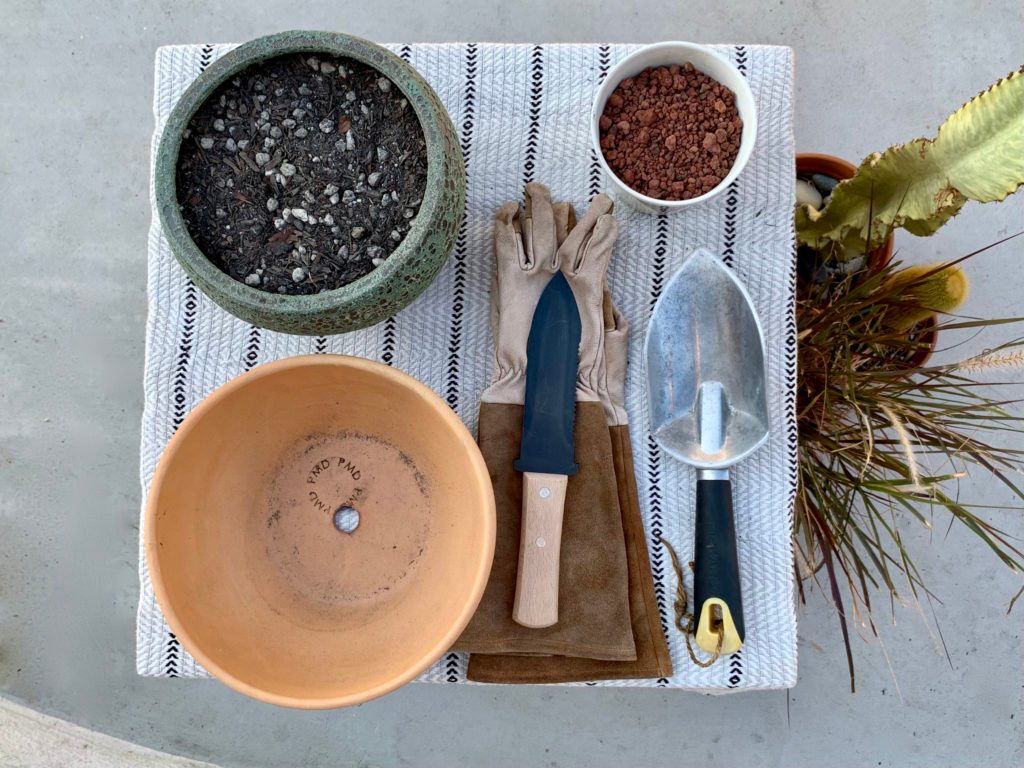HousePlantJoy is supported by our audience. When you purchase through one of our links, we may earn a small affiliate commission. As an Amazon Associate I earn from qualifying purchases. Your cost is not affected.
==================
Hey there, plant enthusiasts! Have you ever wondered why your once vibrant ponytail palm looks lackluster? Don’t worry; we’ve got you covered! Join us as we explore the causes behind a struggling ponytail palm and unveil the essential steps on how to revive a ponytail palm, bringing it back to life. Let’s dive into the world of plant care and restoration together!
Why Is Ponytail Palm Dying? Unraveling the Mystery Behind Its Struggles
Photo by: Epic Gardening
If you’re into houseplants, chances are you’ve come across the charming ponytail palm. With its lush greenery and a trunk as cute as an elephant’s foot, it’s no wonder it’s also called the elephant foot’s palm. Fun fact: Despite the name, it’s not a true palm but is more closely related to the agave. Whether you call it a palm or not, one thing’s for sure – they’re a breeze to take care of!
But you know how it goes; even the most laid-back plants can hit a rough patch. So, we’re here to spill the tea on some common issues these adorable plants might face
Over-Fertilizing
Photo by: Plant Index
Alright, let’s chat about fertilizer – you know, the plant’s version of a meal plan. But here’s the catch: too much of it can throw your plant for a loop. Imagine this: your ponytail palm’s tips going all brown – not the cute kind of brown. It’s like the plant saying, ‘Whoa, slow down with the food!’ yup, that’s the signal of excessive fertilizer. Here’s the catch: Ponytail palms aren’t your typical palms; skip the palm fertilizer and go for the succulent fertilizer; they’re all about that. And about the feeding schedule – don’t get too trigger-happy. Fertilize only when your plant’s in its growth party mode, from spring to fall. Come winter, give it a break. Those brown tips are like the plant’s way of saying, ‘I’ve had enough, dude!'”
Overwatering
Photo by: wikiHow
Alright, let’s spill the tea on why your ponytail palm might be acting out. So, these desert champs thrive on being low-maintenance – storing water in their bulbous base and rocking some dry soil vibes. But here’s the plot twist: drench them in excess water, and it’s like they’re in a plant soap opera.
Imagine this: roots going all mushy and soft, starting a not-so-cool waterlogged party – that’s the root and stem rot saying hello. And the leaves? Instead of their usual green coolness, they’re pulling a drama move, going all brown and limp – the classic yellowing leaves scenario. Even the trunk gets a bit too squishy – not the vibe.
So, keep your plant parent radar on high alert for these signs. Your ponytail palm’s giving you the SOS on water overload – don’t ignore the yellowing leaves and soft stems; they’re the red flags!
Underwatering
Photo by: Weekand
The ponytail palm thrives without water for long periods, but don’t go ghosting them completely. They’re cool, but not that cool. Here’s the heads up: if you see a shrinking trunk, your plant gives you a side-eye for not keeping up with the watering game.
The deal is that the trunk stores water, but once it’s running on empty after those long dry spells, it goes all shrinky-dink mode. The leaves join the drama, turning brown and doing a curling routine. And, if you’re feeling the soil and it’s completely dry – like a desert, shower them with water.
So, even though these guys thrive with the drought vibe, only ghost them partially. They’ve got feelings, too, especially when that trunk starts doing the shrinkage shuffle.
Nutrient Deficiency
Photo by: Garden For Indoor
If you’re playing it cool with the watering, but those leaves on your ponytail plant are going all yellow on you, it’s like a secret plant SOS signal – they’re telling you they’re stuck in a nutrient-poor situation!
When leaves turn yellow, they’re waving a flag for more nutrients, especially nitrogen, magnesium, and manganese. But hold your green thumbs before you go all nutrient superhero. Double-check the vibe by testing the soil with a kit from your local garden store before you treat your ponytail plant to a nutrient feast. Let’s make sure we’re serving them exactly what they’re craving.
Soil and Drainage
Photo by: wikiHow
Okay, let’s dive into ponytail palms and their soil preferences. These cool plants dig well-draining soil to avoid water drama and the dreaded root rot. Say no to the heavy, soggy soil stuff – it’s like inviting trouble with root rot to the party. Grab some cactus or succulent potting mix; it’s like the VIP treatment for your plant.
Now, when it comes to pots, size matters! Pick one that suits your ponytail pal, and ensure it has those essential drainage holes. We want their home to be cozy, not waterlogged. It’s all about setting up the perfect pad for our leafy friends!
Pest
Photo by: Plant Care Today
Let’s talk about some uninvited guests crashing the green party – pests! Even your chill ponytail palm can get bothered. If you see weird whitish stuff on the leaves, blame it on Mealybugs. These tiny troublemakers suck the life out of your plant. And then there are Spider mites – sneaky little bugs. Keep an eye out for these little troublemakers!
Environment and Temperature
Photo by: wikiHow
This is a big deal, especially if you’ve just brought it home or switched up its spot. Think of your plant coming from a snug greenhouse to a new home – like leaving a cozy bed for a new place. It might be a tad stressed. Shifting it to a different room with a different vibe, maybe more breeze or less sunlight can also throw it off.
So, here’s the deal – be that awesome plant parent and give it time to get used to the change. Let your palm kick back and settle into its new digs quickly!
Oh, and if you notice your ponytail palm’s crown collapsing, it could be because of low temperatures like harsh winters and frost damage during those freezing nights. When left out in the cold low temperatures, its leaves might go brown and black, the trunk could get a bit mushy, and the poor thing might even catch an infection. Keep an eye on your plant buddy, especially during those chilly times!
Reviving Your Ponytail Palm: A Guide to Bringing Life Back to Your Dying Plant
Photo by: Epic Gardening
Alright, bringing back a dying ponytail palm or even one that seems completely done might sound like a challenge, but guess what? There’s always hope! Before giving up on it, let’s dig into some steps on how to revive a dead ponytail palm or one that’s on the brink. We can work some plant magic and bring it back to life!
Diagnosing the Problem:
Photo by: Gardeners World
First, let’s play detective and figure out what’s going on with your ponytail palm:
- Keep an Eye on the Leaves: If they’re going brown and feeling all floppy, you might be overwatering. But if they’re turning crispy brown, it could be a cry for more water or sunlight.
- Check Out the Base: A mushy, soft base is like a neon sign for root rot – another hint for our mission on how to revive a ponytail palm.
- Take a Peek at the Soil: Your plant might be thirsty if it’s dry and crumbly. But if it’s wet and soggy, you might be drowning it in love with too much water
- Give Your Plant a Once-Over: Look for unwanted guests (pests), signs of sickness, or anything that seems off. It’s like a thorough health check for your green buddy, all part of our journey to reviving a ponytail palm.
Reviving Your Ponytail Palm:
Photo by: Sunset Magazine
Ready to revive your ponytail palm and wondering how to do it? Let’s tackle this plant rescue mission step by step.
Trim the Affected Roots and Replant It
Okay, if you’ve been too enthusiastic with the watering and your plant shows signs of a soggy situation, we might be dealing with stem and root rot. Time to be the plant doctor – gently pull your green buddy out of its wet situation, snip away the mushy, damaged roots in a bit of a rescue operation, and then find it a new home in some dry soil that it’ll love. Swift action is the key here! You can also gently pull off any loose or dying leaves by hand.
Check Soil and Drainage
Get hands-on with the soil inspection. If it’s heavy and holding onto water like a spa day indulgence, it’s makeover time. Repot your palm into a well-draining cactus mix and make sure its new home has those essential drainage holes.
Adjust Watering
If you’ve been drowning your palm, let the soil take a breather and dry out completely before the next sip. For those guilty of underwatering, show some love with a deep watering session until you see water happily flowing out of the pot.
Bottom Watering Method
Here’s a trick for your plant – make sure its pot has those handy drainage holes at the bottom. Now, grab a basin, fill it with tepid water, and let your plant pot take a little soak. Those drainage holes will ensure the plant slurps up the water it needs. Give it 45 minutes, and let the soil get cozy and moist. Afterward, tip out any extra water and return your plant to its usual spot. Easy peasy, right?
Improve Light
It’s time for a lighting upgrade! Move your palm to a spot with bright, indirect sunlight – a perfect vacation spot for your green buddy. Avoid those drafty corners; your plant prefers a cozy, warm environment.
Discover the Nutrients Lacking in the Soil
Grab yourself a simple soil testing kit – it’s like a cheat code to find out what goodies your soil is missing. This detective work is crucial to pick the perfect fertilizer for your ponytail palm. Even though these plants aren’t exactly fertilizer addicts, they’ll thank you with a bit more pep in their growth if you give them a boost.
Fertilize Sparingly
Wondering how to revive a ponytail palm? Give your palm a gentle nutrient boost, but do just what is necessary. Think of it as a sprinkle of plant vitamins – a balanced fertilizer diluted to half strength, administered once a month during the growing season, will keep your ponytail palm flourishing. Your green companion is bound to thank you with a vibrant comeback!
Treat Pests or Diseases
Show those unwanted guests the exit door! Combat pests and diseases with the right insecticides or fungicides – it’s time to reclaim your plant’s territory.
Want to keep your Ponytail Palm thriving? This video dives deep into their needs and helps you avoid common pitfalls.
Ponytail Palm Care (Light, Water, Soil, Fertilizer, Pot Types, and brown tips and yellow leaves) By: Ohio Tropics Houseplant Care
Struggling Plant to a Thriving Green Companion
In conclusion, reviving a struggling ponytail palm involves understanding its various challenges and taking targeted steps to bring it back to life. Whether it’s over-fertilizing, overwatering, underwatering, nutrient deficiency, soil and drainage, pests, or environmental factors, each problem has a solution. By carefully diagnosing the issue through observations of leaves, the base, soil, and overall plant health, you can tailor your approach to revive your ponytail palm. The revival process is crucial, incorporating techniques such as trimming affected roots, adjusting watering habits, employing the bottom watering method, improving light conditions, and discovering nutrient deficiencies. Additionally, fertilizing sparingly plays a crucial role in rejuvenating your ponytail palm. Remember, being a vigilant plant parent and responding promptly to your ponytail palm’s signals are key to its resurgence. With these steps, you can embark on a journey to learn how to revive a ponytail palm and transform it into a thriving green companion.
FAQs
Is Ponytail Palm Toxic to Pets?
The ponytail palm is generally non-toxic to pets. However, keeping an eye on your pets around plants is always a good idea.
Can Ponytail Palms Survive in Low Light?
While they thrive in bright, indirect light, Ponytail Palms can tolerate lower light conditions.
Why Should You Join Us?
🌿 Get insider secrets: Unearth the best-kept tips to keep your plants thriving and blooming like never before.
🌱 Expert advice: Gain access to our team on Facebook, Twitter, and other social media channels, and meet our gardening experts eager to help you on your plant journey. 👩🌾
🌷 Engage with like-minded souls: Connect with fellow plant lovers, exchange stories, and build a supportive community.
Join us today! Follow Houseplant Joy on Facebook, Instagram, and Twitter for daily inspiration and a blooming good time! #HouseplantJoy #GreenThumbsUnite #HouseplantLove 🌺✨


